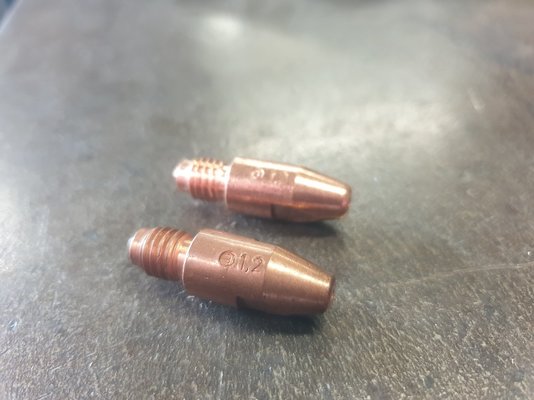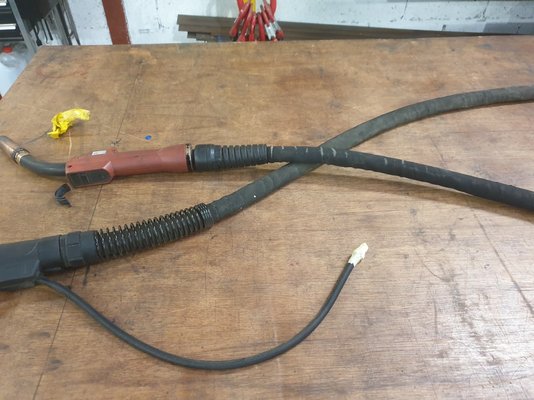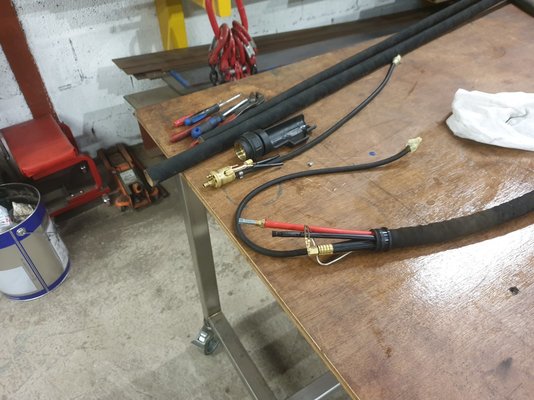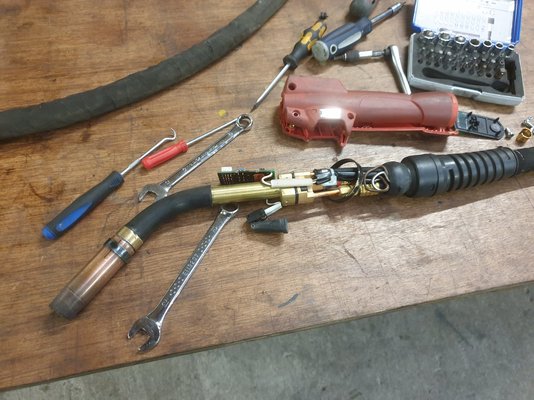matt1978
www.lorch.eu
- Messages
- 3,939
- Location
- UK, Cannock
The differences between the Pulse’s are to do with the regulation of the arc.
Standard Pulse is typically either a U-I or a I-I regulation. (on the S Series it is I-I and on the MicorMIG it is U-I) Competitors will be either/or. And more importantly one droplet of filler material is detached per pulse cycle. Because there is only one droplet detached Pulse can sometimes be considered slow. Because standard Pulse is frequency modulated, this means that the higher the wire speed rate the higher the pulse frequency and that means that the arc gets louder and more obtrusive the thicker material that you want to weld
SpeedPulse is a I-I-I regulation and in simple terms switches to a spray arc after the initial pulse detachment so there is an almost continuous flow of material. Once the pulse cycle is completed it reverts back to Pulse and the droplet detaches and then back to spray and so on. Benefits are it’s around 30% quieter and up to 48% faster than a conventional pulse. Deeper penetration levels, optimum penetration shape and less loss of alloying elements across the arc. It is not frequency modulated and as such doesn’t get louder the thicker the material
SpeedPulse-XT is as above but uses a I-U-I regulation. Again, even quieter and easier for the operator to use as you can use more conventional torch angles like a Spray arc. When combined with the dynamic adjustment you can weld really fast with a very tight short arc but with virtually any spatter.
TwinPulse is a setting that changes the wirefeed/amp in a low frequency Pulse overlay. For example peak of 200 amps, background of 100 amps that switches at 2Hz. You have the ability to adjust how high/low the peak and background is from the main welding current as a percentage. (eg 50% more and less) you can adjust the ratio of the peak and background, (eg 60% of the pulse spent in the peak and 40% in the background) and finally the pulse freq in Hz.
SpeedTwin and TwinPulse-XT operate in exactly the same way with the exception that you have the chance to independently select the arc length for the back ground.
On TwinPulse the high low current uses the standard Pulse process in both phases. SpeedTwin uses SpeedPulse in both phases and TwinPulse-XT uses SpeedPulse-XT in both phases.
Standard Pulse is typically either a U-I or a I-I regulation. (on the S Series it is I-I and on the MicorMIG it is U-I) Competitors will be either/or. And more importantly one droplet of filler material is detached per pulse cycle. Because there is only one droplet detached Pulse can sometimes be considered slow. Because standard Pulse is frequency modulated, this means that the higher the wire speed rate the higher the pulse frequency and that means that the arc gets louder and more obtrusive the thicker material that you want to weld
SpeedPulse is a I-I-I regulation and in simple terms switches to a spray arc after the initial pulse detachment so there is an almost continuous flow of material. Once the pulse cycle is completed it reverts back to Pulse and the droplet detaches and then back to spray and so on. Benefits are it’s around 30% quieter and up to 48% faster than a conventional pulse. Deeper penetration levels, optimum penetration shape and less loss of alloying elements across the arc. It is not frequency modulated and as such doesn’t get louder the thicker the material
SpeedPulse-XT is as above but uses a I-U-I regulation. Again, even quieter and easier for the operator to use as you can use more conventional torch angles like a Spray arc. When combined with the dynamic adjustment you can weld really fast with a very tight short arc but with virtually any spatter.
TwinPulse is a setting that changes the wirefeed/amp in a low frequency Pulse overlay. For example peak of 200 amps, background of 100 amps that switches at 2Hz. You have the ability to adjust how high/low the peak and background is from the main welding current as a percentage. (eg 50% more and less) you can adjust the ratio of the peak and background, (eg 60% of the pulse spent in the peak and 40% in the background) and finally the pulse freq in Hz.
SpeedTwin and TwinPulse-XT operate in exactly the same way with the exception that you have the chance to independently select the arc length for the back ground.
On TwinPulse the high low current uses the standard Pulse process in both phases. SpeedTwin uses SpeedPulse in both phases and TwinPulse-XT uses SpeedPulse-XT in both phases.


 I'll check both... When I'm next in... I'm on holiday for 10 days
I'll check both... When I'm next in... I'm on holiday for 10 days 






